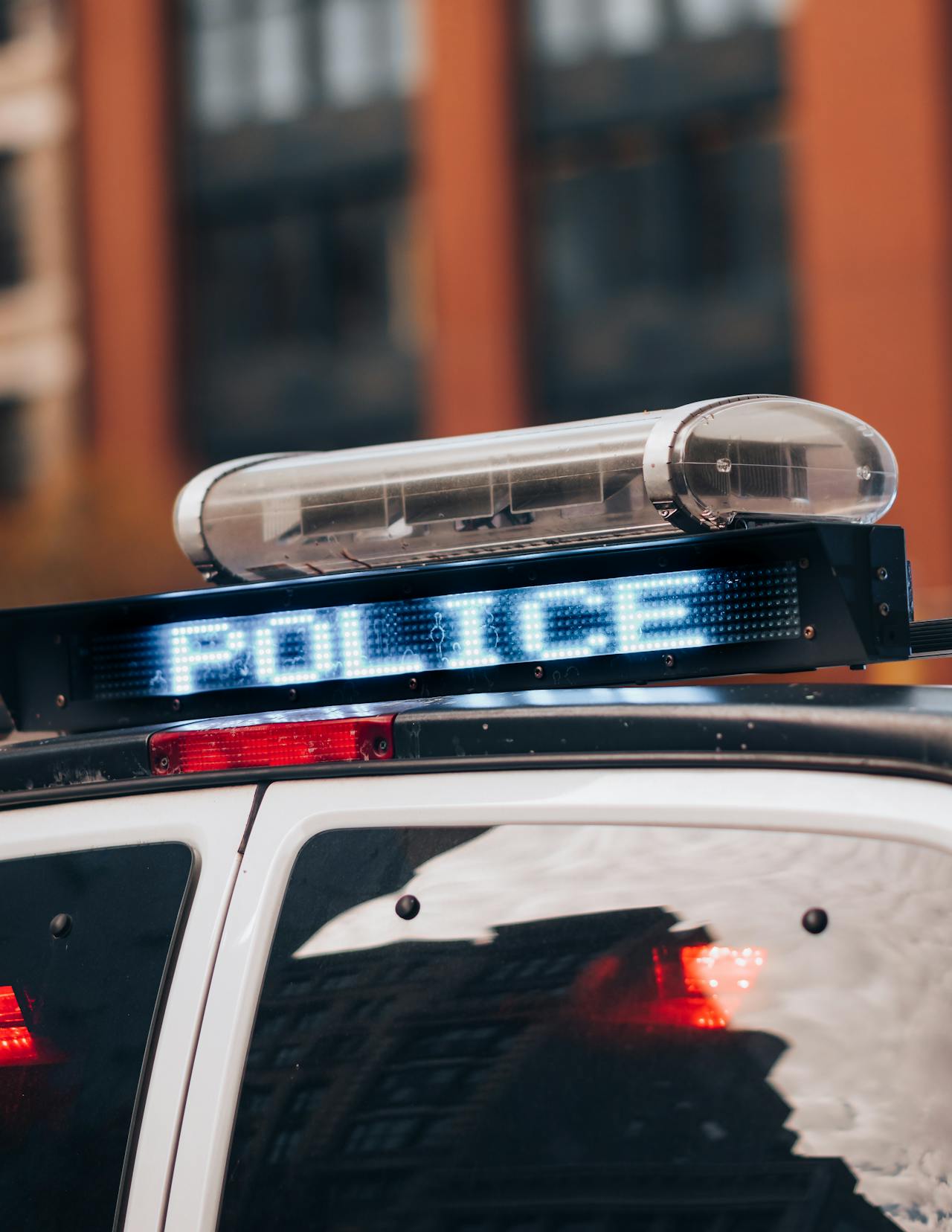Picture a police officer in uniform, standing at attention. Your eyes are drawn to the badge glinting on their chest, but then they shift to the colorful patch on the officer’s shoulder. This patch isn’t just a decorative element; it’s a powerful symbol representing the department’s identity, history, and values. In the world of law enforcement, a patch is more than just accessories—they’re emblems of identity, unity, and pride. But what is it about the patch that make them so significant? How do they contribute to the cohesion and morale of police forces?
A patch is an integral part of police uniforms, serving as symbols of identity and unity within law enforcement. These small pieces of fabric carry a wealth of meaning, representing the history, values, and mission of police departments. In this article, we’ll explore the role of a patch in police identity, their significance in fostering unity, and the symbolism they carry. We’ll dive into the history of these patches, examine their evolution, and discuss their importance in contemporary law enforcement. By the end, you’ll have a deeper understanding of how these seemingly simple symbols play a crucial role in the lives of police officers and the communities they serve.
The Historical Roots of Police Patches: A Journey Through Time
The use of a patch in law enforcement has a long and storied history. To understand their significance, we must first look at their origins. Police patches began appearing in the late 19th and early 20th centuries, coinciding with the formalization of police forces in many cities. The early patch were simple, often bearing the name of the department and a basic emblem. However, even in their simplicity, these patches were powerful symbols of authority and legitimacy.
As police forces grew and evolved, so did the designs of their patch. Departments began incorporating more elaborate symbols and imagery, reflecting the unique characteristics of their communities and the values they upheld. For example, a patch from coastal cities often featured maritime symbols, while those from historic towns included references to local landmarks. This evolution marked the beginning of a patch serving as a visual representation of a department’s identity and its connection to the community.
The Symbolism of Police Patches: More Than Just a Design
At first glance, a police patch might seem like just another part of the uniform, but each patch carries deep symbolic meaning. The designs are carefully crafted to convey specific messages about the department and its mission. Let’s break down some of the common elements found in police patches and their symbolism:
1. Emblems and Logos: Many police patches feature emblems or logos that represent the department’s mission or values. For example, the scales of justice symbolize fairness and impartiality, while an eagle may represent strength and vigilance. These symbols are not chosen randomly; they are selected to reflect the core principles of the department.
2. Local Landmarks and Cultural References: Police patches often include images of local landmarks or cultural symbols, tying the department to the community it serves. This not only highlights the department’s local roots but also fosters a sense of pride among officers and residents alike. For instance, a patch featuring a famous building or monument can remind officers and community members of the area’s heritage.
3. Colors and Shapes: The colors and shapes used in police patches also hold significance. For example, blue is often associated with trust, security, and authority, while gold may symbolize honor and excellence. The shape of the patch, whether round, shield-like, or rectangular, can also convey different messages. A shield shape, for example, often represents protection and defense.
4. Text and Mottoes: Many patches include the department’s name, motto, or a short phrase that encapsulates its mission. These words are often carefully chosen to communicate the department’s dedication to public service and safety. A motto like “To Protect and Serve” succinctly conveys the department’s commitment to the community.
The Role of Patches in Building Police Identity
Police patches play a crucial role in shaping and reinforcing the identity of a police department. They serve as a visual representation of the department’s history, values, and mission, creating a sense of continuity and tradition. Here are a few ways in which a patch can contribute to building police identity:
1. Reflecting Department Values: A patch is a way for police departments to visually express their values and mission. For example, a department that prioritizes community engagement might include symbols of partnership and collaboration in their patch design. This visual representation helps to reinforce the department’s commitment to these values, both within the department and to the public.
2. Fostering Pride and Morale: Wearing a patch that represents their department can instill a sense of pride and belonging among officers. It serves as a reminder of the important role they play in maintaining public safety and upholding the law. This pride can boost morale and encourage officers to perform their duties with honor and dedication.
3. Enhancing Professionalism: Uniforms, including a patch, contribute to the professional image of law enforcement officers. A well-designed patch adds to the overall appearance of the uniform, reinforcing the professionalism and authority of the officer wearing it. This professionalism is crucial for maintaining public trust and confidence in the police.
4. Creating a Unique Identity: Each police department has its own unique identity, shaped by its history, community, and mission. A patch helps to visually distinguish one department from another, highlighting these unique characteristics. This can be particularly important for departments that serve diverse communities, as it allows them to reflect the specific needs and values of the area they serve.
Patches as a Tool for Unity and Cohesion
Beyond building identity, a patch also play a vital role in fostering unity and cohesion within a police department. Here’s how:
1. Symbolizing Team Membership: A patch is a symbol of membership within a police department. When officers wear the same patch, it signifies that they are part of the same team, working towards a common goal. This shared symbol can help to build a sense of camaraderie and mutual support among officers, which is crucial in a profession that often involves high levels of stress and risk.
2. Recognizing Achievements and Specializations: Some patches are used to recognize specific achievements, specializations, or units within a department. For example, officers who have completed specialized training or belong to a particular unit (such as SWAT or K9) might wear an additional patch that signify these distinctions. These patches not only recognize individual accomplishments but also highlight the diverse skills and capabilities within the department.
3. Promoting Inclusivity: Patches can also promote inclusivity by acknowledging and celebrating the diversity within a police department. Some departments have created special patches to recognize the contributions of officers from different backgrounds or to support causes such as LGBTQ+ pride or breast cancer awareness. These patches serve as a reminder that the department values and respects all of its members.
4. Facilitating Interdepartmental Cooperation: When police departments work together on joint operations or mutual aid agreements, a patch can serve as a symbol of cooperation and unity. Officers from different departments wearing each other’s patches during joint operations can signify their shared mission and collaborative spirit. This can help to build trust and rapport between different departments, which is essential for effective law enforcement.
The Evolution of Police Patches: Adapting to Modern Times
As society and law enforcement evolve, so too do police patches. The designs and uses of patches have changed over time to reflect new priorities, technologies, and cultural shifts. Here are some ways in which police patches have evolved:
1. Modern Design Trends: Modern police patches often incorporate contemporary design elements, such as sleek lines, updated fonts, and vibrant colors. These design choices can help to create a more modern and approachable image for the department. Some departments have even updated the patch to reflect changes in their mission or values, ensuring that their symbols remain relevant.
2. Incorporating Technology: Advances in technology have also influenced police patches. For example, a patch now include reflective materials for better visibility, especially in low-light conditions. Additionally, some departments have explored the use of QR codes or other digital elements in a patch, allowing the public to access information about the department or its initiatives.
3. Responding to Social Movements: In recent years, many police departments have adapted their patch to reflect their commitment to social justice and inclusivity. For example, some departments have introduced patches that feature symbols of solidarity with marginalized communities or support for social causes. These patches can help to build trust with the community and demonstrate the department’s commitment to positive change.
4. Special Commemorative Patches: Police departments often create a special commemorative patch to mark significant events, anniversaries, or achievements. The patch can serve as a way to honor the department’s history and celebrate important milestones. They are often worn for a limited time and can become collectors’ items among officers and the public.
The Importance of Patches in Community Relations
A patch is not only play a significant role within police departments but also have a powerful impact on community relations. They serve as a visual representation of the police force and can influence public perceptions and trust. Here’s how:
1. Building Public Trust: A patch can help to build public trust by providing a sense of transparency and accountability. When officers wear a patch that clearly identify their department and rank, it helps the public to easily recognize and identify them. This transparency can foster trust and confidence in the police, as it reinforces the idea that officers are accountable for their actions.
2. Reflecting Community Values: Patches that incorporate local symbols or cultural references can help to reflect the values and identity of the community. This can create a sense of connection and pride among community members, as they see their culture and heritage represented in the police force. It also demonstrates the department’s commitment to understanding and respecting the community it serves.
3. Facilitating Positive Interactions: During community events, officers often wear special patches or uniforms that are more approachable and friendly. The a patch can help to break down barriers between the police and the public, making officers more relatable and accessible. Positive interactions during these events can help to build rapport and strengthen the relationship between the police and the community.
4. Supporting Community Initiatives: Some police departments create a patch to support community initiatives or raise awareness for important causes. For example, departments may wear a patch that promote safety campaigns, health awareness, or support for local charities. By participating in these initiatives, the police demonstrate their commitment to the well-being of the community and show that they are more than just enforcers of the law—they are partners in building a better society.
The Timeless Significance of Police Patches
In conclusion, police patches are far more than just decorative elements on a uniform. They are rich symbols of identity, unity, and pride within law enforcement. From their historical roots to their modern-day designs, a patch serve as visual representations of a police department’s values, mission, and connection to the community. They play a crucial role in shaping the identity of the department, fostering unity among officers, and building trust with the public.
As society and law enforcement continue to evolve, so too will police patches. They will continue to adapt to reflect new priorities, technologies, and cultural shifts. However, their core purpose—symbolizing the identity and unity of the police force—will remain unchanged. So, the next time you see a police officer, take a closer look at their patch. It’s not just a piece of fabric; it’s a symbol of the commitment, pride, and dedication that defines the men and women who serve in law enforcement.
If you are interested in ordering some high-quality custom patches, feel free to call us at 877-912-6407 or fill out a FREE quote here.




